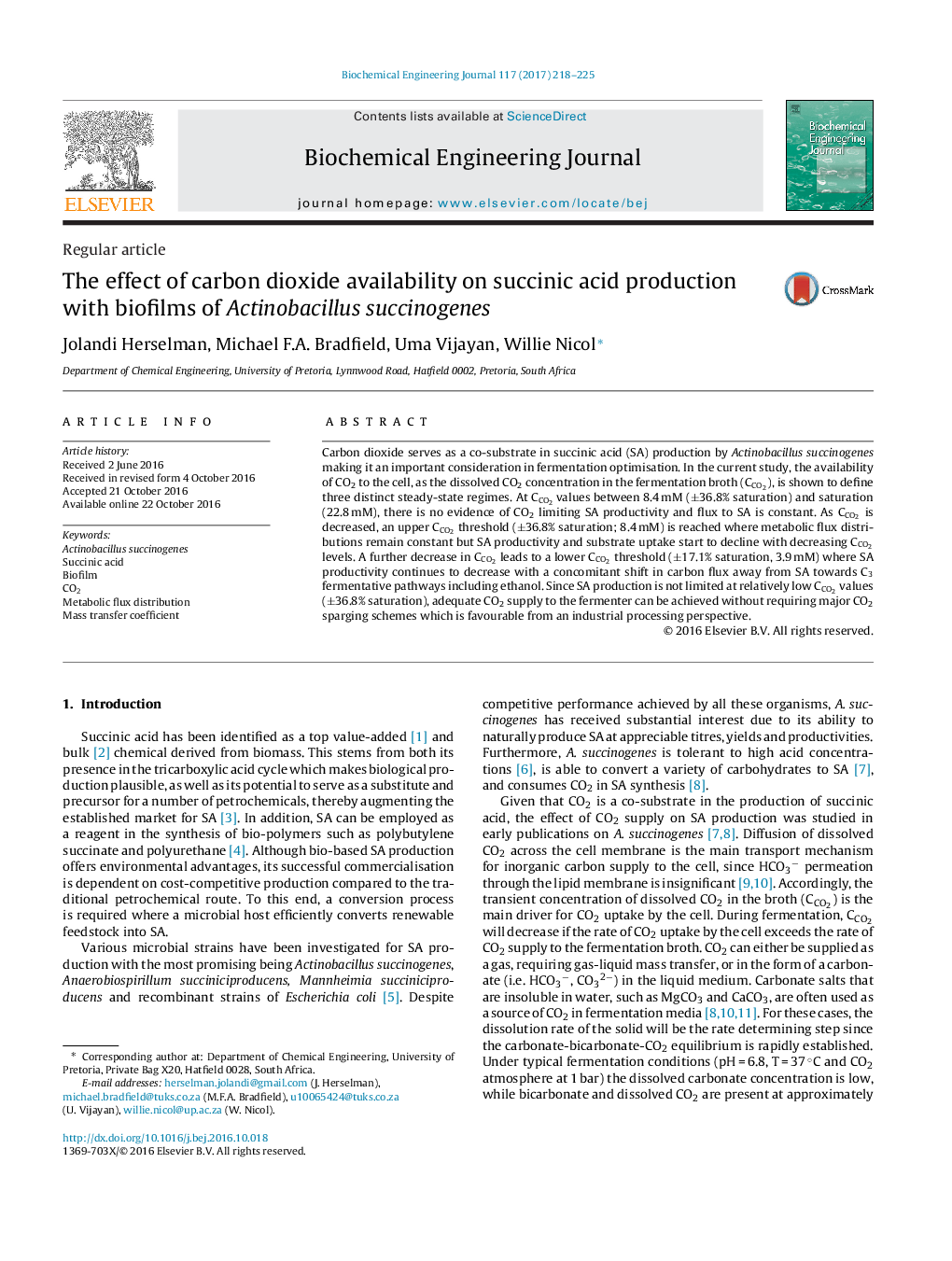| Article ID | Journal | Published Year | Pages | File Type |
|---|---|---|---|---|
| 4752210 | Biochemical Engineering Journal | 2017 | 8 Pages |
â¢Succinic acid productivity starts to decrease with decreasing dissolved CO2 below an upper threshold.â¢The decrease in productivity occurs at a constant flux distribution up to a lower CO2 threshold.â¢Below the lower threshold, succinic acid yields decrease as flux shifts to C3 pathways.â¢Ethanol formation increases with decreasing dissolved CO2 below the lower threshold.
Carbon dioxide serves as a co-substrate in succinic acid (SA) production by Actinobacillus succinogenes making it an important consideration in fermentation optimisation. In the current study, the availability of CO2 to the cell, as the dissolved CO2 concentration in the fermentation broth (CCO2), is shown to define three distinct steady-state regimes. At CCO2 values between 8.4 mM (±36.8% saturation) and saturation (22.8 mM), there is no evidence of CO2 limiting SA productivity and flux to SA is constant. As CCO2 is decreased, an upper CCO2 threshold (±36.8% saturation; 8.4 mM) is reached where metabolic flux distributions remain constant but SA productivity and substrate uptake start to decline with decreasing CCO2 levels. A further decrease in CCO2 leads to a lower CCO2 threshold (±17.1% saturation, 3.9 mM) where SA productivity continues to decrease with a concomitant shift in carbon flux away from SA towards C3 fermentative pathways including ethanol. Since SA production is not limited at relatively low CCO2 values (±36.8% saturation), adequate CO2 supply to the fermenter can be achieved without requiring major CO2 sparging schemes which is favourable from an industrial processing perspective.
